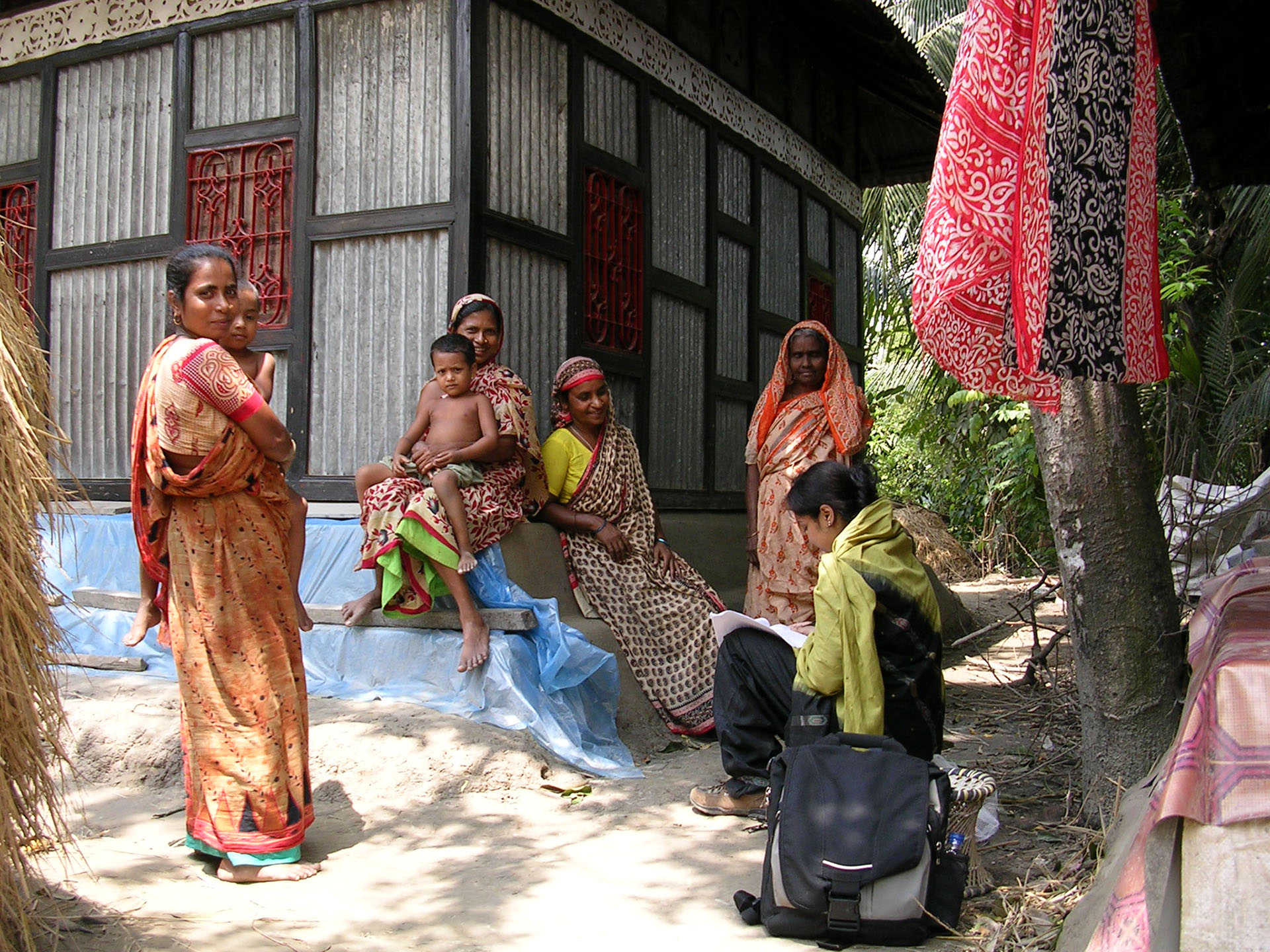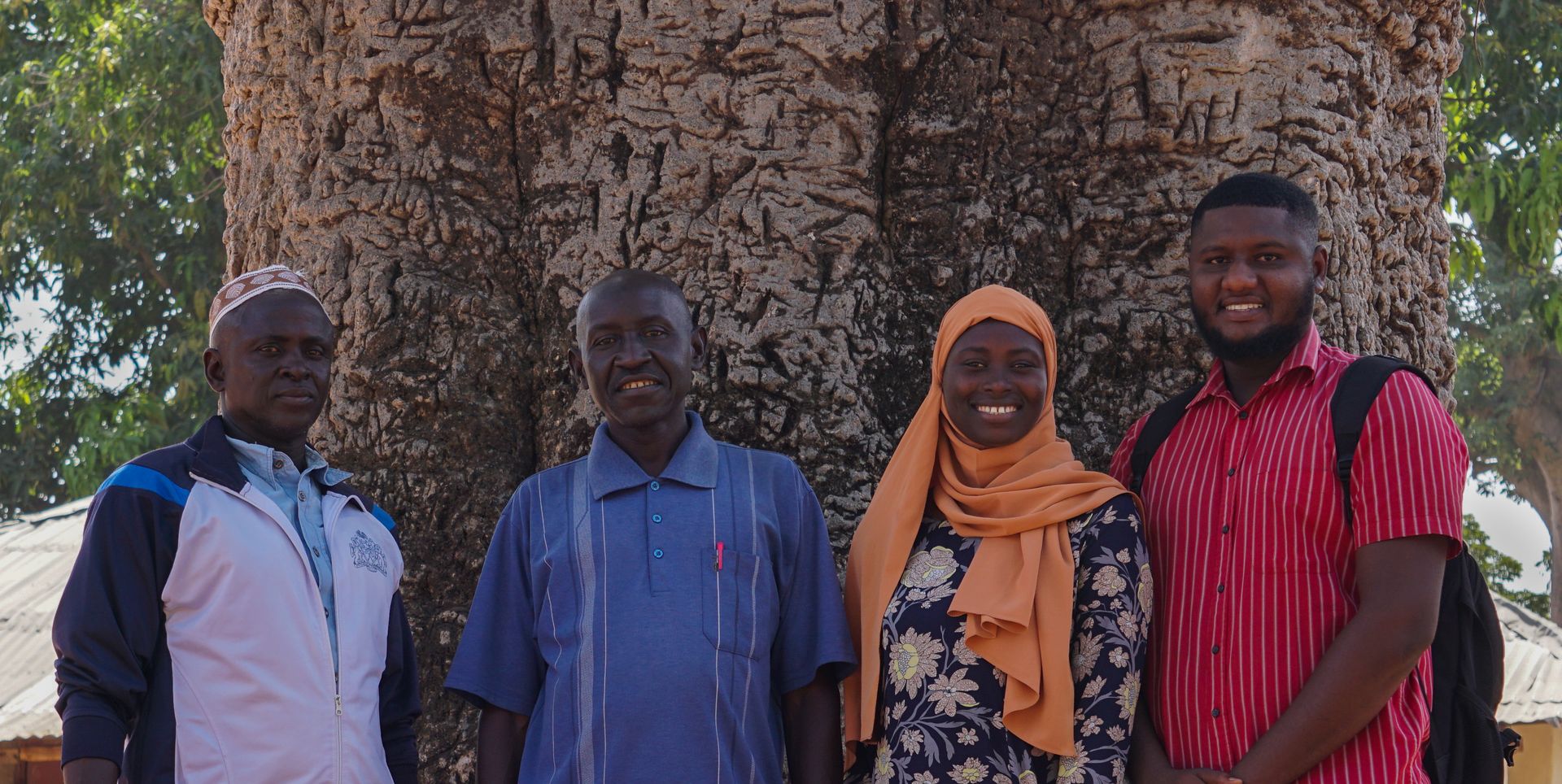Religion in The Gambia scaffolds broad allomaternal support, but not from fathers or their relatives
John H. Shaver, Laure Spake, Radim Chvaja
Compared to our closest primate relatives, humans have more children and they have them more often. Human children also require high levels of investment to reach maturity and thrive. This is because they have prolonged childhoods, during which they depend upon their mothers for food, safety, and survival. Anthropologists recognize that human women are able to accomplish their higher fertility despite having more “expensive” children by garnering substantial support from others during their childrearing years. These features of a unique human life history have been argued to be a key reason for the demographic success of humans, with anthropologists documenting incredible cross-cultural variation in who supports mothers with their children.
Religious groups are a particularly interesting setting to study the relationship between maternal support, fertility, and children’s wellbeing. With respect to fertility, for example, in industrialized and post-industrialized societies, a person’s religious involvement tends to be associated with the number of children they have. From an evolutionary perspective, the high fertility of religious individuals in these environments is puzzling. This is because slowly maturing children are especially costly, and the more children a mother has, the lower each child’s physiological, educational and socio-economic success. How might a person’s religious involvement mitigate the costs of high fertility that are often characteristic of these groups? It could be due to religion’s ability to provide broad cooperative support to mothers, or perhaps it could be due to the religion’s effect on women and men as a reproductive unit.
Two evolutionary theories have been proposed to help to explain how religion might support higher fertility. The Religious Alloparenting Hypothesis proposes that religious mothers benefit from the greater cooperation often found among religious communities. Religious participation is typically found to increase the chance that two individuals will cooperate – this is true across most cultural and religious contexts that have been studied. Religious women may therefore receive more help from their networks, offsetting some of the costs of high fertility. The Reproductive Religiosity Model, by contrast, focuses less on the mother’s broader network, and more on the nuclear family, proposing that religion represents a tacit agreement between the sexes. In this agreement, both members of a couple forgo extra-pair mating opportunities to instead provide faithfulness to one another as a reproductive unit, aiding individuals who prefer high fertility and high child investment strategies. Although this model was first only expected to apply in the US context, the authors have since speculated that the model could also apply to other societies, explaining variations across settings.
The Religious Alloparenting Hypothesis and the Reproductive Religiosity Model make different predictions about who contributes the additional investment required by a larger number of children. If the Religious Alloparenting Hypothesis is correct, then we should expect this support to come from mothers’ broader support networks. However, if the Reproductive Religiosity Model is correct, then we should expect that mothers and fathers invest more into their children themselves, regardless of how much their networks invest in their children.
Most of our work to date has found support for the Religious Alloparenting Hypothesis, documenting that maternal religious involvement is associated with increased childcare support to mothers. This work has also directly contradicted the Reproductive Religiosity Model: we have found that in the UK a woman’s religiosity had no effect on paternal investment, while in the U.S., a woman’s religious behavior had a negative effect on paternal investment.
In a new paper, recently published in the American Journal of Human Biology, we investigated this question in a non-industrialized and non-Christian setting, where less research exists on religiosity, fertility, and child outcomes. Specifically, the analysis examined whether or not maternal religiosity is related to increased child investment from parents. It also examined the mother’s broader support network, asking who else invested in children, what their relationship to the child was, and the extent to which these individuals helped. The data for this analysis comes from The Gambia, a West African country where nearly everyone practices Islam, and was collected as part of a larger cross-cultural study we are conducting.
Across 23 villages, which range in how integrated they are into markets, we randomly sampled 395 mothers and 745 focal children enrolled in the Kiang West Longitudinal Population Study cohort. We conducted structured interviews at people’s homes and asked mothers about who invested in their children and how often they did so, as well as about their religious practices. We randomly chose two of their children (if they had more than one) to ask about. The kinds of investment we asked about involved direct care behaviors such as washing or looking after a child, or resource provisioning such as buying a child gifts or paying for their school fees.

Constructing a religiosity score in The Gambia is more challenging than in Western contexts for several reasons. In Islamic societies, everyone is expected to pray five times a day – in The Gambia, nearly everyone does so. Simple attendance questions do not work to measure religiosity there. Additionally, everyone in The Gambia is religious and it is socially desirable to be seen as religious, so many of the responses to our questions exhibited ceiling effects. That is, for some questions – for example, how important is your religion to how you see yourself – nearly everyone answered the maximum response option, namely that religion was extremely important. The questions that exhibited the most variation in responses were those that tapped into “extra” religious behaviors such as voluntary fasting, or praying in groups outside of the mosque. We used several of these items to construct a religiosity score for each woman.
We found a modest positive relationship between a woman’s religiosity and her fertility, adjusted for her age. We only sampled women who are mothers, so our data cannot speak to all women, or population-wide fertility, but we found that mothers who are more religious have slightly higher fertility than those who are less religious. This is in agreement with broader research on religion and fertility across countries, though very little work on this topic exists in non-industrialized settings.
When we analyzed the social support and child investment data, we found that more religious women tend to invest less in their own children. However, these mothers’ children receive more investment from the mother’s family, from their siblings, as well as from individuals who are related to the mother through marriage, but not genetically related to the child (for example, a woman’s husband’s brother’s wife – in The Gambia, this person often lives in the same compound as the mother). Lower maternal investment appears to be more than compensated for by this additional help: when all of the support that a child received was considered, children of religious mothers receive more total investment. To summarize our findings so far, religious women in The Gambia have slightly higher fertility and invest less in their children, but despite this, their children receive higher overall levels of investment.
Interestingly, a woman’s religiosity had no relationship to the level of her husband’s investment in the child. The Reproductive Religiosity Model assumes that part of the bargain facilitated by religion is that women “agree” to forgo extra-marital mating opportunities in return for increased male investment. We find little evidence in support for this in our data. Because this model focuses on the nuclear family as a relatively isolated social unit (though see), it is unclear whether or how the model would predict that a woman’s religiosity would impact her husband’s kin. However, given that the model assumes that men invest in the children of religious women because their wives’ religious involvement decreases the likelihood of misattributed paternity, then a man’s kin group would also be expected to invest more in the children born to women who are more religious for the same reasons. We found no evidence, however, that patrilineal kin invest more in the children of religious women.
Further exploring the general idea that religion can support male reproductive strategies, others have proposed that Islamic veiling can be interpreted as an attempt by men in these societies to decrease the likelihood of false paternity, reducing the likelihood that men spend time and effort investing in children that are not genetically theirs. In Gambian villages where we work, women cover their heads when leaving their homes in a variety of ways ranging from traditional African headdresses to full body coverings, with some choosing to wear the niqab. We found no difference in paternal investment between men whose wives wear a hijab, abaya (n = 311) or a niqab (n = 2) compared to men whose wives wear traditional local African headwrap (n = 82). Together these findings cast doubt that Islamic practice communicates paternity certainty in The Gambia. This provides additional evidence against the Reproductive Religiosity Model.
Further evidence for the Religious Alloparenting Hypothesis comes from our analysis of how a mother’s religiosity relates to the likelihood that they too will invest in others’ kids. In addition to asking mothers about investment in their own children, we also asked them about their investment in the children of other women. We found that the more religious a woman, the more likely she was to invest in the children of others. It appears that religion in The Gambia supports bidirectional childcare exchange across social networks, so that mothers work together to engage in more cooperative childcare. Together, these data reinforce the problematic nature of using the Western nuclear family as a model for human behavior.
At this region of The Gambia, our collaborator Rebecca Sear’s previous work suggests that support from a mother’s own family improves child survival and growth. Even though anthropologists have stressed the importance of these family members in supporting mothers, perhaps because of a high degrees of relatedness, it is interesting that more religious women seem to be able to access these resources to an even greater extent, considering these kin already invest at high levels. In addition to matrilineal kin, religious women also receive more help from their own children and affinal kin. Neither husbands, nor their kin are influenced by a woman’s religiosity.
Although providing nuanced data from a novel context, these findings may not generalize to other cultural contexts, and instead may vary in interesting ways due to local economic and cultural factors such as integration into markets or patterns of post-marital residence. Our project has collected data in The Gambia, but also in Bangladesh, India, Malawi, and the United States. We plan to analyze these data to help reveal cross-cultural patterns in the relationships between religion, maternal, paternal, and broad social support, as well as overall child investment.


